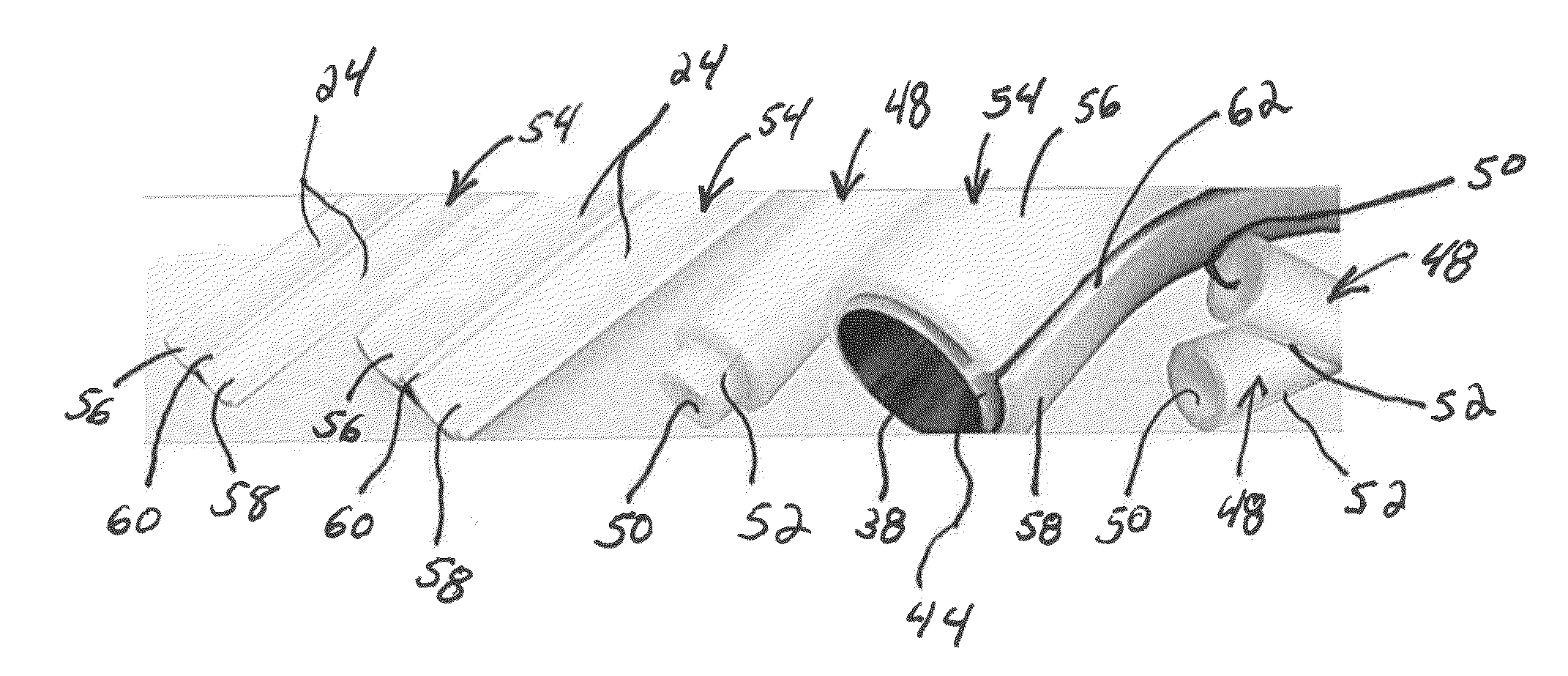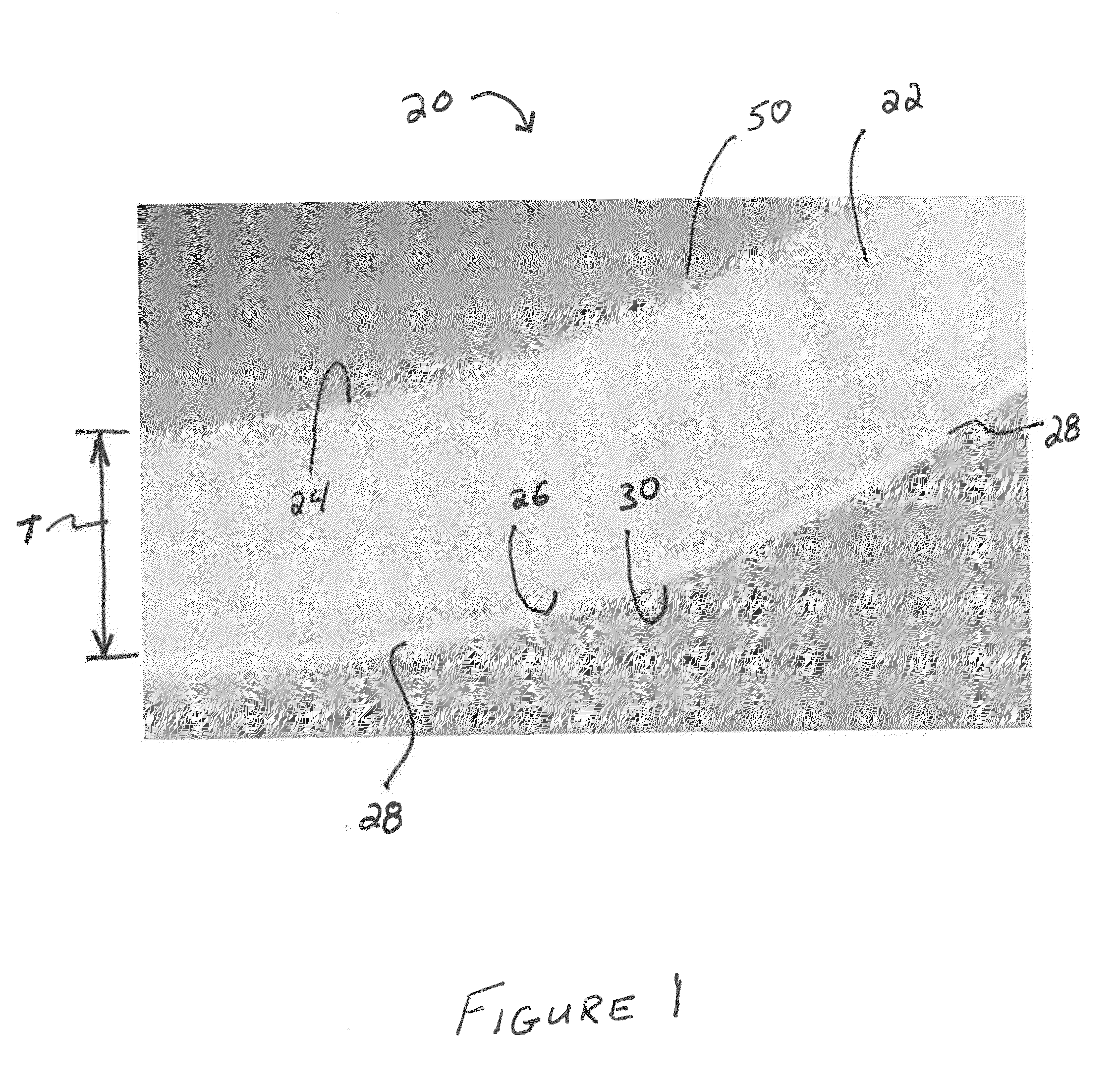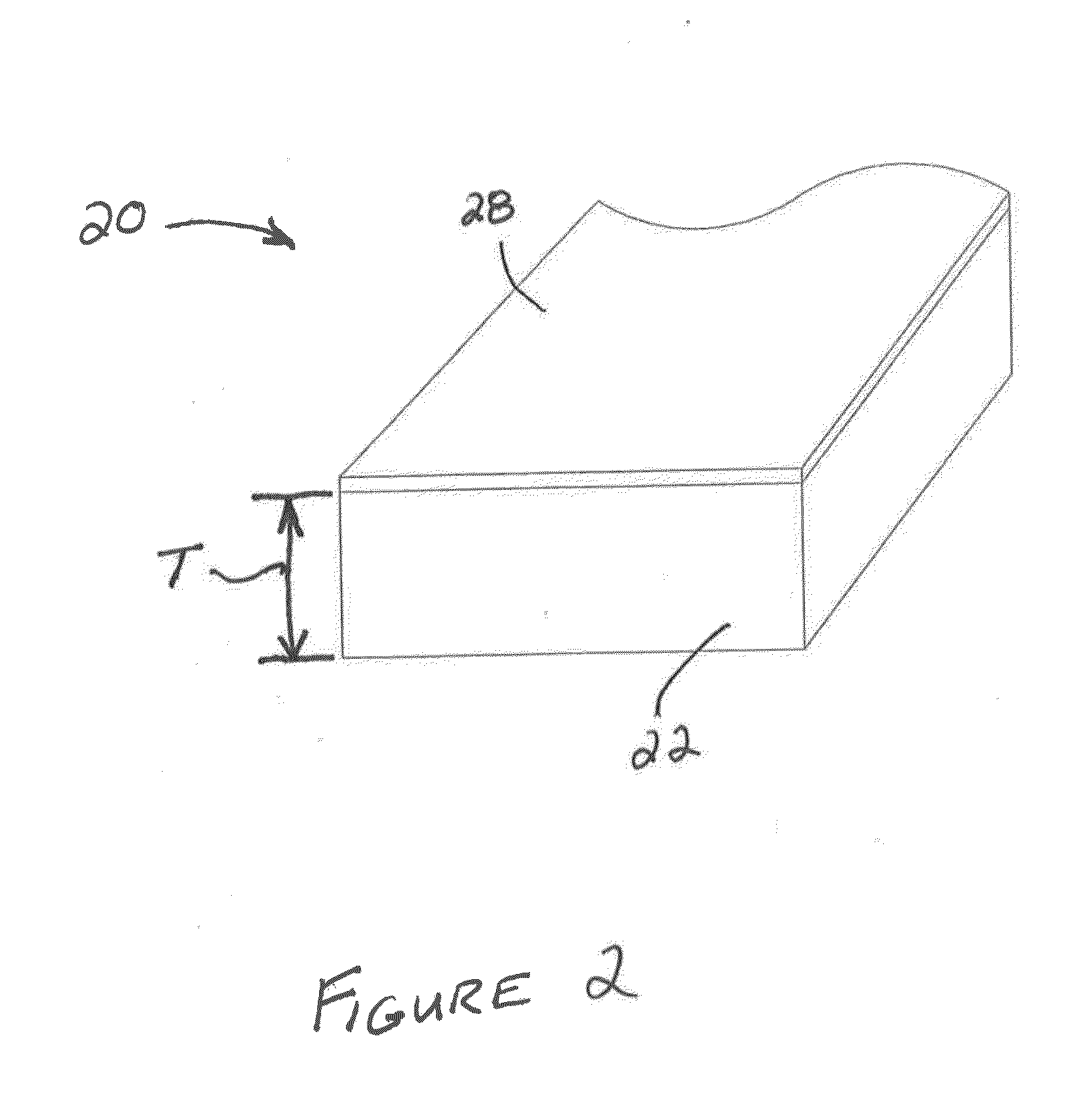Insulating member for covering a conduit in a clean room
a technology for insulating members and clean rooms, which is applied in the direction of closure stoppers, synthetic resin layered products, packaging, etc., can solve the problems of increasing installation costs, time and complexity, and the bulk of insulating materials can increase costs, and achieves less material to be used, high r-value, and reduced bulk
- Summary
- Abstract
- Description
- Claims
- Application Information
AI Technical Summary
Benefits of technology
Problems solved by technology
Method used
Image
Examples
Embodiment Construction
[0020]With reference to the Figures, wherein like numerals indicate like or corresponding parts throughout the several views, an insulating member is generally shown at (20). In one embodiment, the insulating member (20) can be used to partially or completely cover (or be disposed about) all or a portion of a conduit (38), e.g. in FIGS. 5-13. The insulating member (20) may be utilized in clean room or may be utilized for an entirely different purpose or in an entirely different setting. The insulating member (20) is not limited to any particular insulating value or efficiency and may insulate from high and / or low temperatures, e.g. from ambient temperature to about −40° C., from ambient temperature to about 160° C. or, for example, from about 112° F. to about 450° F. All sub-ranges of temperatures within the aforementioned ranges are also hereby expressly contemplated as non-limiting embodiments of this disclosure.
[0021]The terminology “conduit” is not particularly limiting and may ...
PUM
| Property | Measurement | Unit |
|---|---|---|
| thickness | aaaaa | aaaaa |
| thickness | aaaaa | aaaaa |
| temperatures | aaaaa | aaaaa |
Abstract
Description
Claims
Application Information
 Login to View More
Login to View More - R&D
- Intellectual Property
- Life Sciences
- Materials
- Tech Scout
- Unparalleled Data Quality
- Higher Quality Content
- 60% Fewer Hallucinations
Browse by: Latest US Patents, China's latest patents, Technical Efficacy Thesaurus, Application Domain, Technology Topic, Popular Technical Reports.
© 2025 PatSnap. All rights reserved.Legal|Privacy policy|Modern Slavery Act Transparency Statement|Sitemap|About US| Contact US: help@patsnap.com



